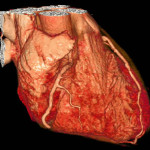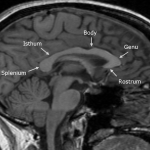Crohn’s Disease: Liquid Protein Diet Promotes Inflammatory Stricture Reduction, Mucosal Healing and Remission

Crohn’s disease is a chronic recurring illness of the gastrointestinal tract. Up to 25% of those diagnosed with Crohn’s are children. While the exact etiology is unknown, Crohn’s involves a combination of exaggerated immune response, genetic predisposition, environmental influences and microflora imbalance. The affected bowel is engorged with inflammatory cells leading to ulceration, with pain…
Intervertebral Disc Degeneration, Programmed Cell Death and a Targeted Therapy That Could Help

Lower back pain is a major problem throughout the world, with the highest prevalence among those aged 40–80 years. Over the coming decades, as the population ages, the global number of individuals with low back pain is likely to increase substantially. Many current treatments involve invasive surgery such as spinal disc fusion. Recent research however may…
Ischemic Stroke Recovery and the Role of Cerebral GABA Activity

Stroke is the leading cause of disability in the world. It is the second leading cause of dementia, and the third most common cause of death. Stroke has a world incidence of 9.0 million and world prevalence of 30.7 million. There are two major kinds of stroke; hemorrhagic stroke and ischemic stroke. Ischemic stroke is…
Finding Your Voice: A 3D Model of Vocal Fold Geometry

Imagine how difficult it would be to lose your voice, to be unable to convey your thoughts and needs via speech. It may be more likely than you think. Approximately 6 percent of the US population develops a voice disorder during their lifetime. Singers, teachers, and politicians are obvious examples of occupations prone to overused…
Modeling the Cervix to Understand Cervical Shortening, a Pre-Term Birth Risk Factor

Women with a shortened cervix during pregnancy are at high risk for premature delivery; the shorter the cervix, the higher the risk. An estimated 500,000 births, 12% of all births annually in the US, are preterm and end in significant infant mortality and morbidity. Associated healthcare costs are a whopping $26 billion per year. Cervical…
Coronary CT Angiography Gauges Heart Disease Severity

A precise view inside coronary arteries speaks volumes about the health of a patient’s heart. This is particularly true when it comes to detecting the extent of life-threatening plaques inside coronary arteries and dangerous left arterial bifurcation angles. A recent study has found that coronary CT virtual intravascular endoscopy can be used to identify different…
White Matter Measurement Helps Predict Cognitive and Language Impairment in Tiny Preemies

Cognitive function and language development in children with neurodevelopmental delays can be helped dramatically through early detection and targeted interventions during infancy. In a recent study conducted at the Children’s Memorial Hermann Hospital (CMHH) and The University of Texas Medical School at Houston, scientists developed a specialized tool for measuring white matter abnormalities in the…
Five Pitfalls to Avoid When Seeking Scientific Research Grants

As most people in the science community know, obtaining research funding has become more challenging than ever. With increased competition for fewer available resources, only those projects holding the greatest promise for positively impacting our world earn their rightful place in the lab. But even the best and brightest ideas can fall prey to quick…
Corpus Callosum Measurement and Major Depressive Disorder: How structural changes may indicate mental illness

The largest fiber pathway in the human brain, the corpus callosum, serves as the brain’s central interconnecting structure, having over 200 million nerve fibers extending between the left and right hemispheres. Posterior to anterior, the corpus callosum is divided into five main sub-structures: splenium, isthum, body, genu and rostrum. Historically, the function of the corpus…
Gestational Hypothyroidism May Affect Hippocampus Development and Memory

Memory deficit may be related to maternal hypothyroidism during pregnancy. It is well-known that thyroid hormone deficiency in children and rodents can adversely affect hippocampal development. Children with congenital hypothyroidism have been shown to have learning and selective memory deficits, along with hippocampus underdevelopment. To take it a step further, maternal thyroid hormone is present…
 AnalyzeDirect
AnalyzeDirect